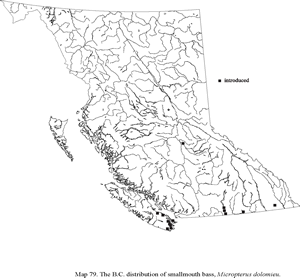A large, deep-bodied fish with rough scales and well developed spines in the dorsal and anal fins. Dorsal spines (total): 46; Dorsal soft rays (total): 1314 (FishBase). This species is generally similar to the largemouth bass. Refer to McPhail (2008) for a detailed description and discussion on how to separate largemouth and smallmouth bass.
Source: McPail, J. D. 2008. The Freshwater Fishes of British Columbia. University of Alberta Press, Edmonton.
